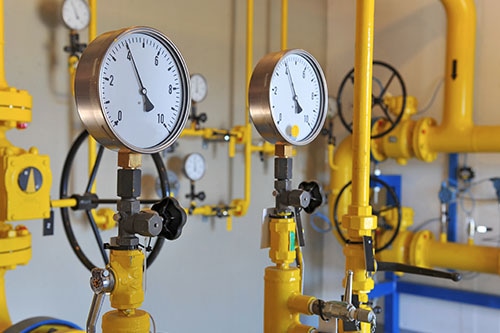Protect your valentine from carbon monoxide poisoning
This Valentine’s Day, think outside the (candy) box to show you really care. Along with the traditional card or candy, give a gift of safety. Protect your loved one — and yourself — from carbon monoxide (CO) poisoning, which occurs most often during the cold winter months.
Carbon monoxide (CO) is known as the “silent killer.” At low levels, it can make you sick. At high levels, it is deadly.
Every year, at least 430 people die in the U. S. from accidental CO poisoning, according to the Centers for Disease Control and Prevention based here in Georgia. Approximately 50,000 people in the U.S. visit the emergency department each year due to accidental CO poisoning.
Carbon monoxide is a highly poisonous gas that is colorless, odorless, tasteless and nonirritating. It is produced from when fuels such as natural gas, propane, gasoline, heating oil or wood burn incompletely, according to the National Fire Protection Agency.
This Valentine’s Day, Walton Gas encourages you to surprise your sweetie with a true gift of love by taking steps to protect your household from CO poisoning. To help, we’ve rounded up these 10 most-asked questions about CO poisoning and prevention.
1. What causes CO to accumulate?
Common sources of carbon monoxide gas include heaters, fireplaces, furnaces and many types of appliances and cooking devices, including charcoal grills or barbecues. Idling vehicles also produce carbon monoxide gas. When indoors, the gas can build up to dangerous levels — especially in modern eco-conscious homes.
2. What are CO poisoning symptoms?
CO poisoning mimics flu-like symptoms including headache, fatigue, nausea, dizziness, confusion and breathing difficulty. Higher concentrations of CO can cause vomiting, loss of consciousness, brain damage and sometimes death.
3. What should I do if CO poisoning is suspected?
Act quickly. Leave your home immediately and seek medical attention.
4. How can I prevent CO leaks?
Conduct regular heating and cooling system maintenance and be sure ducts are properly sealed. Have a licensed professional inspect your fuel-burning appliances before every heating season. Make sure the appliances are running properly and are correctly vented to the outside of your home.
5. What should I know when buying a CO detector?
It’s important to note a couple of options exist on the market, each with their own advantages:
Plug-in and battery-operated. These models are less expensive and convenient. They are available in a range of price points and are ready to plug in straight from the box.
Hard-wired. These detectors are powered by the same wiring for a home’s outlets and light fixtures to provide reliable detection. Some even come with a display panel so you can monitor your home’s current CO concentration in parts per million (ppm).
Note: You can also purchase combination smoke and carbon monoxide alarms that will monitor for both threats simultaneously.
6. How many CO detectors do I need?
Per the U.S. Consumer Product Safety Commission (CPSC), you should have at least one detector for each level of your home and additional ones outside bedrooms. Skip attics or basements unless they house a gas-fueled appliance.
7. Where should I install the detectors?
No matter what type of carbon monoxide detector you choose, always follow the manufacturer’s instructions and requirements for installation. While some work best at levels five feet from the ground and below, you must install others on or near the ceiling.
8. Where should I avoid installing a detector?
Avoid these locations:
-Areas with high humidity, such as bathrooms.
-Areas with temperatures below 40°F or above 100°F.
-Near areas with heavy ventilation.
-Within five feet of cooking appliances.
-Within 20 feet of combustion appliances.
-In direct sunlight.
9. How often should I test a CO detector?
The CPSC recommends monthly tests. Here’s an idea: Check your CO and smoke detectors on the 14th of every month as a sign of love for your family. Also remember to keep other equipment, like gas furnaces, in check with seasonal tune-ups.
10. What does that annoying chirping sound mean?
If you have a CO alarm that is emitting random chirping or beeping, it needs your immediate attention. It means your alarm is no longer offering the protection it should. It may signal that it’s time to replace the batteries. Or it could be time to replace the entire device. Most CO alarms have a usable lifespan of about seven years.
There is nothing more important than keeping your loved one safe. On Valentine’s Day — and every day — be proactive in protecting against CO poisoning. Your sweetie will love you for it, but it still won’t hurt to throw in some chocolate and flowers, too!
MORE: Customers of EMC Secur-ity, a sister company of Walton Gas, can add fire and carbon monoxide protection at no additional cost. Learn more at https://emcsecurity.com/fire-alarm-systems or call 770-963-0305.
